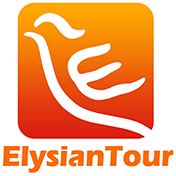Tibetan Buddhism Murals from 13th Century Discovered in Yushu Qinghai
 On Nov. 8, 2019, a set of Tibetan Buddhist murals were unearthed from a construction site in Nangqian County, Yushu Tibetan Autonomous Prefecture, Qinghai. It was identified as a mural work dating back to 13rd century (the initial stage of the Tibetan Buddhism) and also the earliest Tibetan Buddhist wall paintings found in Qinghai, according to a director of the Palace Museum in Beijing.
On Nov. 8, 2019, a set of Tibetan Buddhist murals were unearthed from a construction site in Nangqian County, Yushu Tibetan Autonomous Prefecture, Qinghai. It was identified as a mural work dating back to 13rd century (the initial stage of the Tibetan Buddhism) and also the earliest Tibetan Buddhist wall paintings found in Qinghai, according to a director of the Palace Museum in Beijing.
On Nov. 8, 2019, a set of Tibetan Buddhist murals were unearthed from a construction site in Nangqian County, Yushu Tibetan Autonomous Prefecture, Qinghai. It was identified as a mural work dating back to 13rd century (the initial stage of the Tibetan Buddhism) and also the earliest Tibetan Buddhist wall paintings found in Qinghai, according to a director of the Palace Museum in Beijing.

Perched on the eastern part of Qinghai-Tibetan Plateau, Nangqian County has been served as the south gateway to Qinghai Province. The county boasts 103 Tibetan Buddhist monasteries and religious activity spots. The recently found mural paintings are believed as a part of the Puqieang Grottoes site.
On the construction site, an apparent temple site was cleared out, with three well-reserved frescos and about 50 broken pieces. The simply restored murals feature on full-bodied style of Poirot Art of ancient India in 13rd century, which are very similar to those discovered in Hexi Corridor. The scripts below the Buddha image also accord with characteristics of Tibetan Buddhist art in 13rd century.
The following work of cultural relics experts will focus on practical measures to protect those precious murals as soon as possible.









